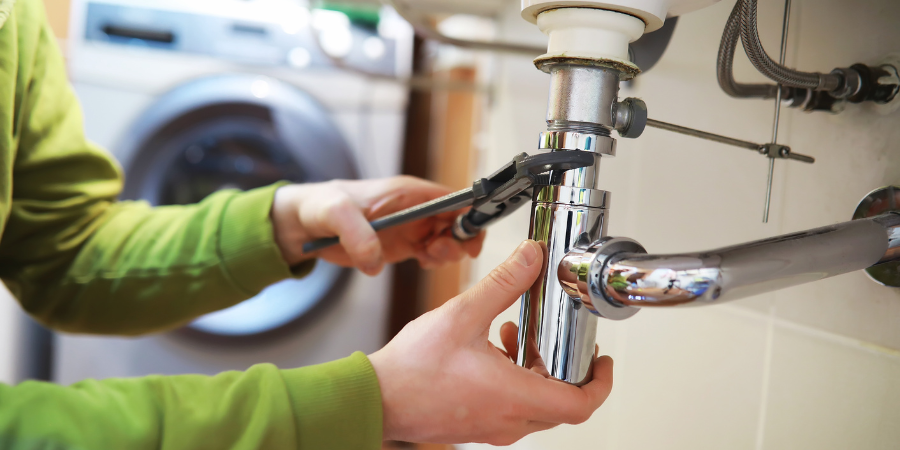In a time where sustainability is more than just a buzzword, but rather a more and more pressing necessity, investing in water-conserving plumbing fixtures and appliances becomes a wise choice for the environmentally conscious homeowner.
Homeowners can easily observe the significant impact that modern, efficient fixtures can have not only on water conservation but also on monthly household expenses. The decision to replace older, less efficient appliances and fixtures with newer, water-conserving models is an investment in both the environment and your wallet.
The following sections will delve into the various types of water-saving fixtures available, the mechanics behind their operation, and the long-term financial and ecological advantages they offer. By understanding these benefits, homeowners can make informed decisions that align with their goals for saving energy and the future of our planet.
Understanding Water-Efficient Fixtures
Water-conserving fixtures and appliances are designed to provide the same level of functionality as their traditional counterparts while using a much smaller amount of water. This section will introduce the fundamental technologies used in these fixtures, such as low-flow faucets, toilets, and showerheads, and the standards set by certifications like WaterSense.
Types of Water-Saving Appliances and Fixtures
Toilets
Modern toilets account for a significant portion of water use in many homes. Dual-flush toilets are a good example of water conserving fixtures now on the market. These are more water-efficient than those installed just a decade ago.
Using less water in general and two options for flushing liquid and solid waste, these toilets use about 20 % less water than conventional toilets with only one flush option.
Showerheads and Faucets
Upgrading to low-flow showerheads and faucets can dramatically reduce water usage without sacrificing performance. These products mix air into the water creating the feel of a strong flow while significantly reducing water usage.
Dishwashers and Washing Machines
High-efficiency dishwashers and washing machines not only use less water but are often more effective at cleaning. Dishwashers have been improved so rinsing and washing dishes before they go into the dishwasher has been eliminated.
Front-loading washers use up to 70% less water through the use of paddles and drums that lift laundry and move it about to clean it without the need for a full tub of water.
Benefits
These fixtures’ lower utility costs can completely offset the initial investment in these high-efficiency products. They also have far-reaching environmental benefits, as discussed below.
Cost Savings Over Time
Investing in water-efficient fixtures can result in significant cost savings over time. The Environmental Protection Agency has reported that homeowners switching to energy-efficient, water-conserving fixtures and appliances save about 30% on water usage. This directly relates to reduced sewage bills since water usage determines the amount of money charged for wastewater removal, as well as lower energy bills.
Additionally, many local governments and utility companies offer rebates and incentives for the installation of water-efficient appliances, further enhancing homeowners’ financial benefits.
Environmental Benefits
Beyond the immediate financial benefits, using less water means contributing less to the depletion of water, one of our precious resources. Water-saving appliances and plumbing fixtures play a crucial role in reducing the overall demand for freshwater, a resource that is increasingly under stress from overuse and climate change. By minimizing water waste, households contribute to the conservation of local water ecosystems, helping to maintain water levels in rivers and lakes.
Furthermore, using less water means less energy is being used at water treatment facilities, and less energy is needed to distribute this treated water. This means fewer greenhouse gases are being released, which affect our climate negatively
Looking To Install Water Conserving Plumbing Fixtures And Appliances?
Upgrading to water-conserving plumbing fixtures and appliances is not merely a trend but a forward-thinking move that aligns with broader environmental and economic goals. As we face global challenges related to water scarcity and environmental decline, individuals can help lessen the problems by choosing efficient fixtures.
Implementing these technologies in your home can be a seamless and overwhelmingly positive change. The initial investment is quickly offset by the savings in water and money, not to mention the satisfaction of contributing to environmental conservation.
If you’re ready to take a step towards a more sustainable and cost-effective household, pick up the phone and give us a call to discuss upgrading to water-efficient fixtures. Learn more about your options and how you can contribute to a sustainable future. Let’s make every drop count!






